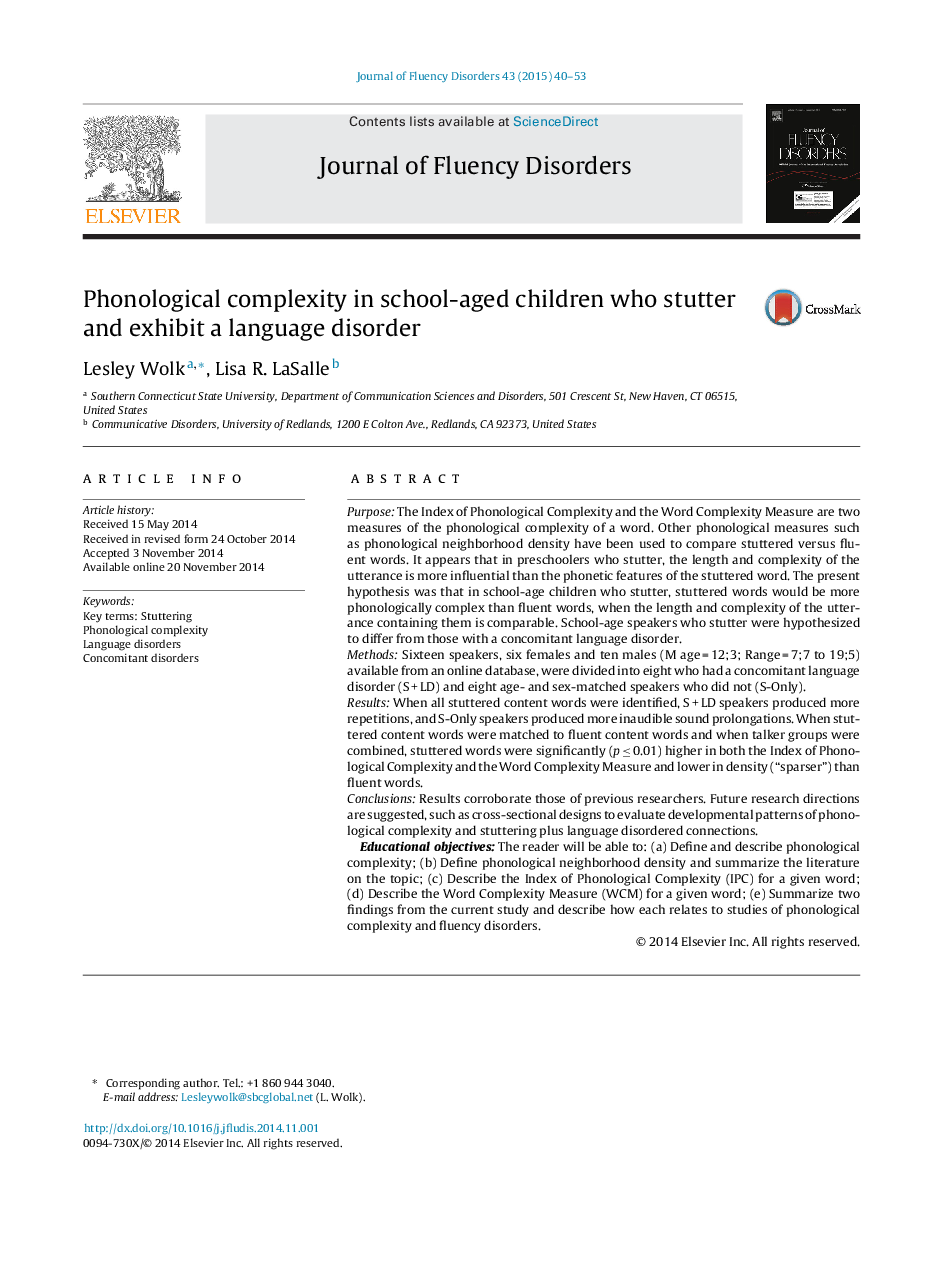| کد مقاله | کد نشریه | سال انتشار | مقاله انگلیسی | نسخه تمام متن |
|---|---|---|---|---|
| 911317 | 1473147 | 2015 | 14 صفحه PDF | دانلود رایگان |
• Sub-grouping helps us to understand phonological complexity effects on stuttering.
• School-agers who stutter + language disorder were compared to peers who stutter.
• Content words were used, because function words are low in phonetic complexity.
• Stuttered words are more phonologically complex and “sparser” than fluent words.
• S + LD speakers produced more repetitions; S-Only speakers produced more blocks.
PurposeThe Index of Phonological Complexity and the Word Complexity Measure are two measures of the phonological complexity of a word. Other phonological measures such as phonological neighborhood density have been used to compare stuttered versus fluent words. It appears that in preschoolers who stutter, the length and complexity of the utterance is more influential than the phonetic features of the stuttered word. The present hypothesis was that in school-age children who stutter, stuttered words would be more phonologically complex than fluent words, when the length and complexity of the utterance containing them is comparable. School-age speakers who stutter were hypothesized to differ from those with a concomitant language disorder.MethodsSixteen speakers, six females and ten males (M age = 12;3; Range = 7;7 to 19;5) available from an online database, were divided into eight who had a concomitant language disorder (S + LD) and eight age- and sex-matched speakers who did not (S-Only).ResultsWhen all stuttered content words were identified, S + LD speakers produced more repetitions, and S-Only speakers produced more inaudible sound prolongations. When stuttered content words were matched to fluent content words and when talker groups were combined, stuttered words were significantly (p ≤ 0.01) higher in both the Index of Phonological Complexity and the Word Complexity Measure and lower in density (“sparser”) than fluent words.ConclusionsResults corroborate those of previous researchers. Future research directions are suggested, such as cross-sectional designs to evaluate developmental patterns of phonological complexity and stuttering plus language disordered connections.Educational objectives: The reader will be able to: (a) Define and describe phonological complexity; (b) Define phonological neighborhood density and summarize the literature on the topic; (c) Describe the Index of Phonological Complexity (IPC) for a given word; (d) Describe the Word Complexity Measure (WCM) for a given word; (e) Summarize two findings from the current study and describe how each relates to studies of phonological complexity and fluency disorders.
Journal: Journal of Fluency Disorders - Volume 43, March 2015, Pages 40–53
